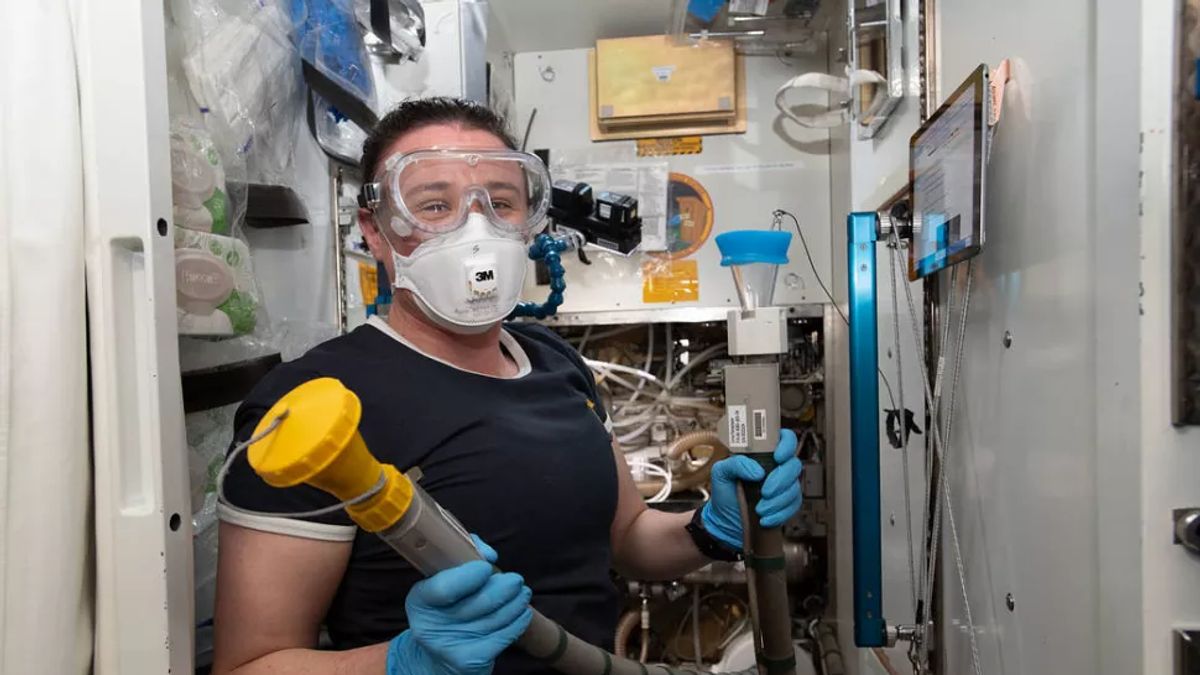JAKARTA - Not a few of us question how an astronaut goes about his daily activities in space, including going to the toilet. Now, netizens don't need to be curious anymore, because the American Space Agency (NASA) astronauts have answered that.
In a 7-minute video shared via Twitter, astronaut Chris Cassidy shows the process of how he went to the toilet while on the International Space Station (ISS). It is known that there are two toilets that can be used with different functions.
From the short Vlog snippet, Cassidy shows the appearance of a toilet on the ISS dubbed the Waste and Hygiene Compartment (WHC). Cassidy explains that the process of getting to a toilet in outer space is the same when he does it on Earth.
According to Cassidy, so far there has been a lot of misinformation where urine fluid will float in the bladder while in space. "It's just the exact same sensation for one, number one or number two," said Cassidy, as quoted by VOI , Friday, October 16
The main toilet number two consists of a seat and a metal bucket, while the number one toilet functions as the Urine Processor Assembly (UPA) which is equipped with a hose and valve.
The valve controls the fan which sucks into the tube to easily suck the urine stored into it. Cassidy shows the entire process of urinating in space using a simulator. Jokingly, he added that good crew members clean it up after use.
One of the most frequent questions we get about life on @Space_Station is how to use the toilet… Here's a quick look at the answer! pic.twitter.com/FTJu4sOyWP
- Chris Cassidy (@Astro_SEAL) October 7, 2020
Then, Cassidy continued the next process of how to defecate in space. He started by opening the lid of the toilet, which contained the main drain which was 5 to 6 inches in diameter.
According to the NASA website , inside the dumpsite, the hole contains a layer of plastic that crew members push in after defecating. Crew members use steel bars to push the used plastic further into the metal container under the toilet seat and then replace new plastic bags for others to use.
The English, Chinese, Japanese, Arabic, and French versions are automatically generated by the AI. So there may still be inaccuracies in translating, please always see Indonesian as our main language. (system supported by DigitalSiber.id)













